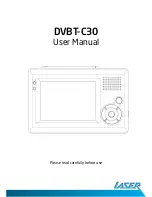
121
Most commands (and some parameters) are expressed as a mixture of
upper- and lower-case letters.
The upper-case letters indicate the
abbreviated part that must be specified for the command. For shorter
program lines, send the abbreviated form. For better program readability,
use the long form. For example, in the above syntax statement, STAR
and START are both acceptable forms for the same command. You may
also mix upper- or lower-case letters in a command. For example, START,
star, and Star are all acceptable for the same command. Other forms,
such as STA will generate an error.
Braces
(
{ }
) enclose parameter choices for a given command string.
The braces are not sent with the command.
V
ertical bars
(
|
) separate multiple parameter choices for a given
command string.
Triangle brackets
(
< >
) indicate that you must specify a value for the
enclosed parameter. For example, the above START command accepts a
frequency
parameter enclosed in triangle brackets. The brackets are not
sent with the command string. You must specify a value for the
parameter such as "STAR 6000".
Some parameters are enclosed in
square brackets
(
[ ]
). The brackets
indicate that the parameter is optional and can be omitted. The brackets
are not sent with the command string. If you do not specify a value for an
optional parameter, the waveform generator uses the default value.
B.1.2 Command Separators
A
colon
(
:
) is used to separate a command keyword from a lower-level
keyword. You must insert a
blank space
to separate a parameter from a
command keyword. If a command requires more than one parameter,
you must use a comma between two parameters:
"APPL:SIN 5 KHZ, 3.0 VPP, -2.5 V"
Summary of Contents for G5100A
Page 5: ...5 D APPLICATION PROGRAMS 173 ...
Page 71: ...71 Schematic of Receiver ...
















































